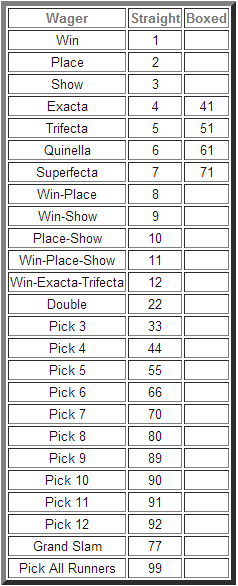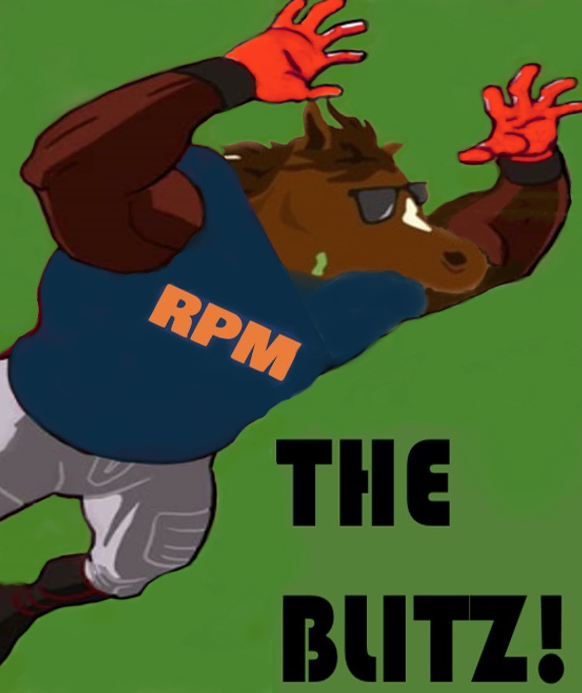Win Place Show Bet
Win, Place, Show – How To Bet On Horses (Part 2) Continuing with the example from the prior post: Win, Place, Show (Part 1), let’s change the order of finish slightly by switching the top two horses #8 and #2. The former payouts are shown on the left for comparison, and the new payouts are shown on the right. Let me tell you about the emotional hedge bet, and why you, intrepid Colts fan, need to place one before this Sunday. You live and die with the Colts. In most of the rest of the world there is a simple choice between a win bet and a place bet. In North America, the Place Bet means to be placed just 1st or 2nd only while the Show Bet means to be placed 1st, 2nd or 3rd. The North American Tote betting system will give different dividends for each horse that finishes in the first three.
As most horse race handicappers know, betting on a winning horse can help you achieve significant payouts. However, recklessness when betting on a horse at the race tracks can just as easily lead to big losses. Therefore, it is important that you understand how much you can bet safety and when to bet this money.
Common Tactics to Avoid When Betting on a Horse
- A Show bet gives you an even better chance of collecting than a place bet, as a show bet wins if your horse finishes 1st, 2nd, or 3rd in the race. Now generally a horse pays less to place than to win and less to show than to place.
- The average win price at most tracks is $11.80 or approx 5-1 That's what we are looking for. The typical show price we want is around $3.60 and wherever you play or whatever site you bet with make sure you get track odds.!!! A Horse paying $3.00 to show gives.

There are many approaches that you can take when betting on a horse and each of these have their own pluses and minuses. Some of these can lead to better results, while others are completely unreliable. Here are a few tactics that are best avoided when betting on a horse.
The Martingale System
In the Martingale system, your wager is increased dramatically after every loss. The goal of this is to ensure a small profit when you finally win. This system is very popular among those who bet at casinos, but is not applicable when you are betting on a horse. In the system, a bet is doubled after every loss. Then, when you win, you are back to what you originally bet. Here's a example of the Martingale system in action.
You are betting on a horse and you put down one unit on your favorite one. If the bet is won, you will bet one more unit in the coming race. If you lose the bet, the size of the next bet is increased and you now bet two units. If you lose the second race also, the bet is again doubled and you now bet four units. Finally, if you win a race, will be back to one unit.
:strip_icc()/pic2605206.jpg)



It may seem that the system can help you make profits in horse betting. After all, if your bankroll is large enough, you will occasionally win a race. However, in actually, this system can be hazardous and can lose you a significant amount of money. The Martingale system works best when the chances of winning are 50-50 and this is not applicable when you are betting on a horse.
Suppose a horse is giving you odds of 4-1 or even a 2-1. These odds are simply not enough to allow the Martingale system to work and the risk of ruining your finances is also extremely high. Suppose you bet $10, but then you lose the next 9 races. On the 10th race you will have to bet $5120 if you want to break even. If you win this one, your net win will be only $10. Just think, is $10 worth risking $5120 and all the money you bet earlier. Therefore, when you are betting on a horse, the Martingale system is just too much risk.
The Flat Bet Strategy for Betting on a Horse
Win Place Show Bet Odds
The flat bet strategy is when your wagering amount remains the same, in repeated bets. This might be a decent strategy for betting on a horse, except for the fact that the odds will vary when betting on one horse or another. Take this example, you bet $5 on a 1-1 horse. This can return much different results than betting on a horse that has 9-1 odds.
Therefore, because every horse has different odds, if you are not betting appropriately, you may be losing out.
The Win Place Show Strategy for Betting on a Horse
Another common betting method is to place a flat bet on the same horse across multiple wagers. This is a very popular way of hedging a bet as many feel it accounts for the unknown. For example, suppose you feel very strongly about a particular horse, but also you recognized that there are also a couple of other fast horses who might beat your horse before the final leg. So to protect yourself in the event that your horse loses, you bet that it will clinch a spot in the first three (show). If your horse comes first, you could win all three bets. If your horse finishes in second, even then you win. You even will still make some money from betting on the horse if it places third and you placed a show bet.
Win-Place-Show can be a good strategy, but occasionally. Excessive hedging will cut into your profit deeply. People generally say that if you favor a horse, you should bet that it will win as this yields the best results.
Betting On a Horse to Win: What We Recommend
At Horse Race Handicappers, we recommend that clients bet on two horses to win each race. This technique for betting on a horse is called dutch betting. With our daily selections, we offer our clients our top two picks for each race and each horse should be bet to win. Additionally, we always insist on at least 4-1 odds on both horses at two minutes until post time. We have found that this technique generates the most consistent and best results.
If you want to learn more about betting on a horse, you can browse our website, where you will information on horse racing and betting, betting tips, and the best odds. You can also purchase our horse racing picks packages to see our winning selections for each day.
Win Place Show Betting Sheets Printable
What Makes Us Horse Racing Experts?
Horse Racing Win Place Show
- We use information that people at the track don't have
- Utilize the combined efforts of our expert staff
- We collect and analyze rare information not often published from past performances
- We provide our clients with a daily comprehensive list of the horses and acceptable odds we will be wagering
- We continually monitor all mid-level and large tracks currently running and only wager on horses when we have positive, non-publicized information on a horse